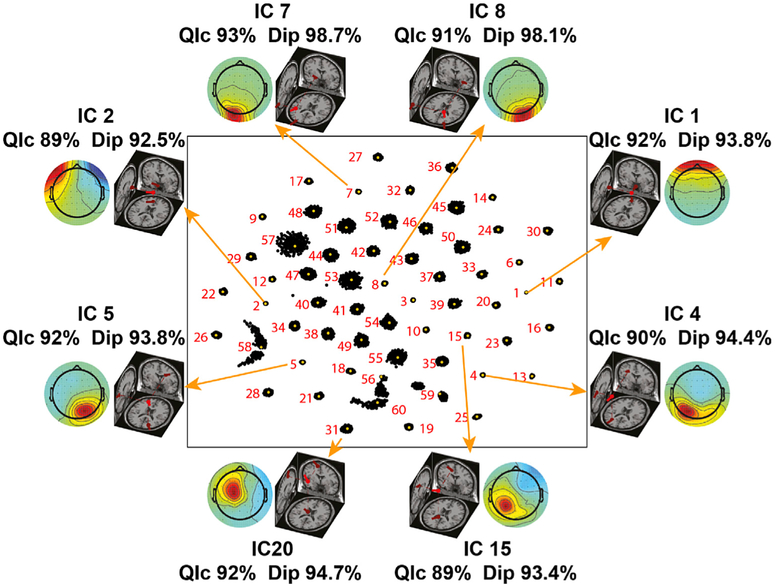Fig. 4. Representative reliable ICs.
Scalp maps and respective equivalent dipole locations of eight reliable independent components identified using RELICA in the data of a representative participant. Each IC is connected by an arrow to its relative cluster. Each dot represents a particular IC of one (out of 150) ICA run. The more compact the cluster the higher the stability of a IC to small variations in the original data (bootstrapping). IC1 and IC2 account for vertical and lateral eye movement artifacts and IC7 and IC8 account for left and right neck muscle activity respectively. The high quality index (QIc) values for these ICs (respectively 92%, 89%, 93%, 91%) is consistent with the relative compactness of their RELICA IC clusters, and their high dopolarity is ascribed to the short electrode-source distance and power of such artifacts. Artifactual (non-brain) components with high dipolarity (Dip>90%) and replicability quality index (QIc>85%), and with equivalent dipole locations outside the brain volume such as these were removed from the data before proceeding with further analyses. IC4, IC5, IC15, and IC20, instead, represent meaningful, brain-based central, left, and right mu rhythm processes with high dipolarity and QIc. This 2D representation of the IC space enables also to detect possible ICA decomposition artifacts, i.e., components that might not have been successfully separated, by their “mustache”-like distribution (e.g. IC56).

